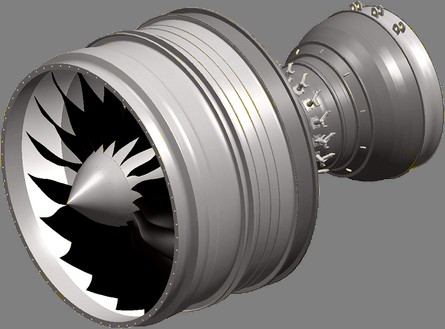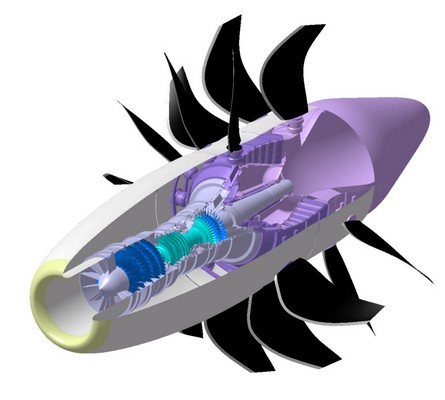For CFM International, the decision whether to stay with a turbofan or move to an open-rotor engine to power the next generation of single-aisle airliners will come sooner rather than later. The General Electric/Snecma joint company has set the end of the decade for a decision on the architecture of its next engine. This timing is based on the expectation that Airbus and Boeing will field new narrowbodies around the middle of the next decade.
"It is a short decision timeframe," says Ron Klapproth, manager of CFM's LEAP56 programme to develop technology for the next engine. "By the end of this decade we have to have all the technologies matured so we can make an architecture decision." When LEAP56 was launched in 2005 it was aimed at an advanced new-centreline turbofan "with an architecture like today's CFM56", says Klapproth. But as CFM worked with airframers and customers "we got the message that, as advanced as the engine is, they want more".
Readiness required
As a result, in parallel with the base LEAP56 programme for an advanced turbofan, the partners have begun work on an open-rotor engine. And the technologies for both have to achieve a readiness level by late this decade that will allow an architecture decision.
"We don't know if it will go ducted turbofan or open rotor," says Klapproth. But if the decision is for an open rotor, it will delay availability of an engine for the next-generation single aisles. "If we go for the more radical open-rotor architecture, we will need additional time to mature the technologies," he says. "That will push things back towards the end of next decade."

LEAP56 advanced turbofan © CFM International
The base LEAP56 programme is aimed at having an advanced turbofan ready by the middle of next decade that will provide - compared with the latest CFM56 - 10-15% lower specific fuel consumption, 10-15dB less noise, 10-15% lower maintenance costs and NOx emissions 50-60% below CAEP 6 limits.
"The challenge is to achieve all these goals in one architecture," says Klapproth. "We have a suite of technologies to get us there, but the step forward is so big it will take us two to three years to mature them to ensure the engine will enter service at the reliability level customers expect."
But if customers want more than the base LEAP56 turbofan can offer, a new architecture will be required. "If they push for another 4-5% in sfc we can't find a path to that [with a turbofan]," he says. "There is so much technology pulled into LEAP56 - we're not leaving any behind."
Open-rotor goals include a double-digit improvement in fuel burn over the LEAP56 turbofan, plus the same noise, emissions and maintenance cost targets. "We flew an open rotor in the late 1980s. We know we can deliver significantly better engine sfc," says Klapproth. "The challenge is to install the engine and translate the sfc benefits into lower aircraft fuel burn."

Open rotor LEAP56 © CFM International
Under LEAP56, open-rotor technology work is focused on acoustics, blade pitch change and engine installation. Applying the latest aero-acoustic design tools to data from the late 1980s tests of the GE36 UDF unducted fan shows "real opportunity to improve" the noise, says Klapproth, while "a lot of new work" is needed on the pitch-change mechanism to achieve the maintenance cost goals, which are driven by time-on-wing requirements, which for LEAP56 "far exceed anything in operation today", he says.
Installation unknowns
Compared with the UDF, a future open-rotor engine is likely to have a larger-diameter propulsor for better acoustics and performance, making installation a challenge. The preferred configuration is direct drive, like the UDF, but CFM is looking at other options depending on aircraft installation, says Klapproth, adding: "It's going to take two or three years before we really understand installation, performance and acoustics."
How well the installation translates the open rotor's sfc advantage into reduced aircraft fuel burn and C02 emissions will be key factor. "Over the last 12-18 months there has been a lot of emphasis on fuel burn and carbon," says Klapproth. "If the airlines want a 20% lower fuel burn then it's a combination of engine sfc and aircraft weight and drag improvements."
Source: Flight International























